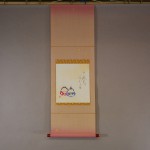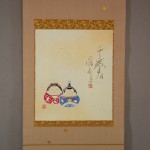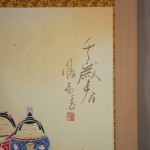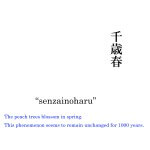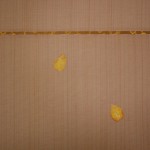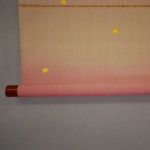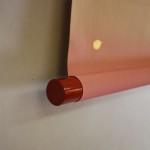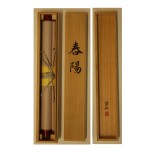Products Lineup
News / Blog
Other Menus
“Hina” Daruma Dolls / Suikou Saitou & Houen Kusunoki - Shun-you
- Product ID
- 0149
- Name
- Suikou Saitou & Houen Kusunoki
- Profile
Suikou Saitou 1913-1987
A Japanese-style painterHouen Kusunoki ? – A calligrapher
- Size
- 448mm x 1200mm
- Roller End Material
Wood coated with red "urushi" (lacquer)- Material of the Work
- Japanese paper
- Stock Condition
- Sold out
- Description
“Hina-matsuri” (The Japanese Doll Festival) is an annual event. It is a seasonal festival to pray for the healthy growth of girls. In the festival, we display dolls centering around two dolls representing the emperor, called “obina” and the empress, called “mebina.” The display is decorated with peach flowers, and people enjoy eating and drinking “shirozake” (sweet white sake).
Daruma doll, which is a self-righting doll, is popular as a lucky charm. “Hina” Daruma doll is Daruma-doll in obina or mebina shapes.
This work is a collaboration between Suikou Saitou and Houen Kusunoki. The hina Daruma dolls were painted by Suikou Saitou and the calligraphy was written by Houen Kusunoki. The hina Daruma dolls are very pretty and the calligraphy was written with lively brushstrokes. The fluttering flower petals are drawn with gold paint on the mouting fabric. It is very difficult to paint something on mouting fabric. This work is very splendid.


